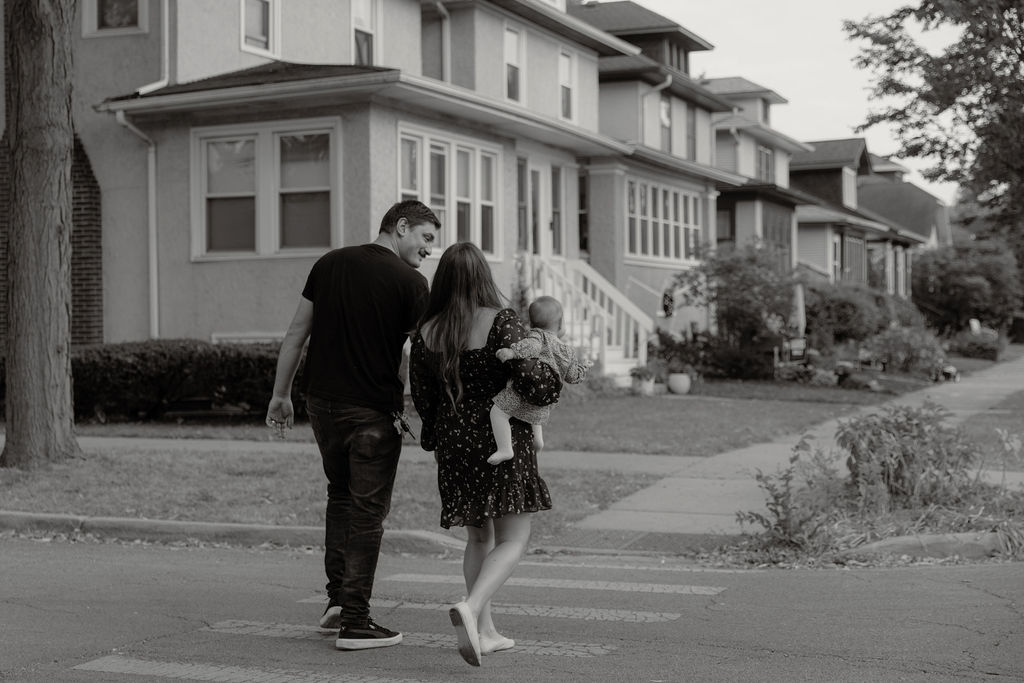Navigating the Unique Challenges of Eldest Daughter Syndrome

Eldest Daughter Syndrome (EDS) is a term that’s been used in the mental health field since 1997. EDS is an adult as female who hasn’t yet learned how to let go and have realistic expectations of someone other than herself. Those affected by EDS think nothing is ever good enough. It’s the perceived concept that they’re not capable of meeting others’ expectations and as a result, are left feeling inadequate & struggling to trust others.
Symptoms:
- Sense of responsibility
- Perfectionism
- Maturity beyond their age
- Nurturing instinct
- Leadership qualities
- Stress and pressure
- Sensitivity to criticism: Eldest daughters might be sensitive to criticism and have anxiety around the fear of disappointment.
- Jealousy and sibling rivalry: Sibling rivalry can go both ways. The eldest daughter can feel envy or jealousy towards later-born siblings who have received more attention, needs met, and had an easier childhood. At the same time eldest siblings have to handle the jealousy and competition from later-born siblings who are continuously trying to measure up or become better than their oldest sibling. This can cause the eldest daughter to have anxiety around competition. They may also feel unsupported by their family of origin.
- Difficulty delegating:
- Desire for independence:
Positive Effects of Eldest Daughter Syndrome
- Responsibility and Leadership: these two traits may come easy for you. You will rise to the occasion if put in a leadership position.
- Maturity: You are wise beyond your years probably from having comfortable conversations with your caretakers, parental figures, and adults in your life.
- Natural Nurturers: Many eldest daughters have a natural ability to care for those who are vulnerable. Because of having a strong sense of empathy, they are amazing nurses, therapists, caretakers, and workers in foster care or social work. They are also very caring, loyal friends. This comes from learning at a young age how to take care of others who are smaller and younger than they are — their later-born siblings.
- Achievement-Oriented: You are motivated by recognition, goals, and achievement. This can be great in areas of the work place especially when an organization is healthy.
Signs You Were Parentified as a Child:
- Being pulled into a conflict between your parents.
- Being held responsible for parenting siblings.
- Hiding your feelings in order to avoid stressing your parents out.
- Signing paperwork meant for adults.
- Parents feel comfortable sharing their life problems and worries with you.
- Having to figure things out on your own.
- Feeling like you are responsible for your parent’s emotional needs.
How to Start Healing:
1. Reevaluate your Responsibilities
Don’t be afraid to delegate. Simplify your to-do list. Avoid organizing other’s events, gatherings or parties. Try reaching out to family to see if they can help you in anyway.
2. Challenge the Reason Behind Your Perfectionism
Refuse to let perfectionism be a part of your personality. It is not a personality trait. It is actually a way of self-preservation or a way to protect yourself. One way to fight against perfectionism is to pay attention to the way you are talking to yourself. Try talking to yourself with kindness, forgiveness, and grace — like you would a friend. Try to avoid others who put unrealistic expectations of perfectionism on you. Create a boundary and surround yourself with others who will decrease the pressure you are already feeling and allow you to be yourself. Being human means having flaws, learning from mistakes, and having imperfections.
3. Express Your Thoughts and Needs
Many eldest daughters learned to suppress their own needs and opinions to keep peace and harmony at home. They often were the ones who had the pressure to not create fights with younger siblings and found that just giving a younger sibling a toy that they were playing with created a lot less conflict. In adulthood, it is important to learn the skill of expressing your needs and knowing that your opinions matter too. Avoid words like being too pushy or too shy and find tips on being assertive when you communicate.
4. Try Inner Child Work
Inner child work is a therapeutic approach that focuses on healing and nurturing the wounded or neglected aspects of one’s inner child. It is not a specific, evidence-based therapeutic modality but rather a concept and approach that draws from various established therapeutic theories and practices. The idea behind inner child work is that emotional and psychological wounds from childhood can impact an individual’s adult life and well-being, and by addressing and healing these wounds, individuals can experience personal growth and emotional healing.
Here are some key points about inner child work:
- Origin: The concept of the inner child is rooted in psychoanalytic and psychodynamic theories, particularly the work of Carl Jung and Sigmund Freud. It gained popularity in the 1980s and 1990s, thanks to self-help authors like John Bradshaw and Alice Miller.
- The Inner Child: The “inner child” is a metaphorical representation of the childlike aspects of a person’s psyche, which can include memories, emotions, needs, and vulnerabilities from their early years. These aspects are believed to continue to influence adult behavior and emotions.
- Healing Process: Inner child work typically involves a process of self-exploration, self-compassion, and self-acceptance. It encourages individuals to revisit and acknowledge past wounds, connect with their inner child, and provide the care and nurturing they may not have received as children.
- Techniques: Therapists and individuals may use a variety of techniques, including guided imagery, journaling, creative expression, meditation, and visualization to access and work with the inner child. These techniques aim to help individuals confront and process unresolved childhood issues.
- Benefits: Advocates of inner child work claim that it can lead to increased self-awareness, improved self-esteem, better emotional regulation, and healthier relationships. It can also help individuals break free from negative patterns of behavior and beliefs rooted in childhood experiences.
- Criticism: Inner child work is not universally accepted within the psychological and therapeutic community. Critics argue that it lacks empirical support and scientific validation. Some caution that it can be overly simplistic and may not address the complexity of psychological issues. Others express concerns about potential false memories that might emerge during the process.
- Integration with Other Therapies: Inner child work is often used in conjunction with other therapeutic approaches, such as cognitive-behavioral therapy, psychodynamic therapy, and mindfulness practices. Integration with evidence-based therapies may provide a more comprehensive treatment plan.
It’s essential to note that the effectiveness of inner child work can vary from person to person, and not everyone finds it beneficial. If you are interested in exploring inner child work or addressing unresolved childhood issues, it’s advisable to seek the guidance of a qualified therapist or counselor who can provide professional support and integrate it into a broader therapeutic framework.
5. Practice Self-Reflection
Inner reflection is a deliberate and introspective process that involves turning one’s attention inward to explore thoughts, emotions, experiences, and personal beliefs. It is a means of gaining self-awareness, a deeper understanding of one’s values, motivations, and desires. Through inner reflection, individuals can evaluate their past actions, make informed decisions about their future, and foster personal growth. This practice often involves quiet contemplation, meditation, journaling, or conversations with oneself, allowing individuals to connect with their inner selves and enhance their ability to navigate life’s challenges with greater insight and clarity.
As an eldest daughter is important to understand what you do and why you do it. Is it because of your own convictions or because you are conditioned to take responsibility.
6. Challenge the Reason Behind your Perfectionism
Seeking therapy is a valuable option for anyone, regardless of their birth order. Eldest daughters, like individuals of any birth order, may face unique challenges and stressors that could benefit from therapeutic support. Whether it’s the pressure to be a role model, caregiver responsibilities, sibling dynamics, or expectations associated with being the firstborn, these experiences can lead to emotional struggles, anxiety, self-doubt, or relationship difficulties. Therapy can provide a safe and non-judgmental space for eldest daughters to explore their feelings, cope with their individual experiences, improve self-esteem, and develop healthier ways of relating to themselves and others. It can also help them recognize and address any unresolved issues from their past, ultimately contributing to their overall well-being and personal growth. It’s essential to remember that seeking therapy is a proactive step toward self-care and personal development, available to anyone seeking support in navigating life’s challenges.
7. Have Fun!
It’s important for an eldest daughter, like anyone else, to prioritize having more fun in her life because fun and enjoyment are essential components of overall well-being. Being the firstborn often comes with responsibilities, expectations, and a tendency to prioritize others’ needs. However, neglecting one’s own happiness and sense of fun can lead to stress, burnout, and a diminished quality of life. By consciously incorporating more enjoyable activities and experiences into her life, the eldest daughter can reduce stress, boost her mood, enhance her mental and emotional resilience, and build healthier relationships. Fun and relaxation can also help her rediscover a sense of playfulness and spontaneity, contributing to a more balanced and fulfilling life, not only for herself but for those around her as well.
Eldest Daughter Syndrome as A Journey
Eldest daughter syndrome, characterized by the unique challenges and responsibilities placed upon the firstborn, can have a profound impact on an individual’s life. While there isn’t a one-size-fits-all solution to healing from this syndrome, it’s crucial to acknowledge its existence and its potential effects on one’s mental and emotional well-being. Healing often begins with self-awareness and self-compassion. Seeking therapy or counseling can provide a supportive and structured environment for exploring and addressing the issues associated with eldest daughter syndrome. Building healthy boundaries, learning to say “no” when necessary, and prioritizing self-care are essential steps in the healing process. Embracing the importance of fun, self-discovery, and self-fulfillment can help eldest daughters reclaim their own identity and find a balance that nurtures their well-being while still fulfilling their responsibilities. Ultimately, healing from eldest daughter syndrome involves a journey of self-acceptance, growth, and finding a path that aligns with one’s true desires and needs.
Sources:
1. FamilyEducation – Eldest Daughter Syndrome 2. The Conversation – What is ‘eldest daughter syndrome’ and how can we fix it? 3. Phys.org – What is ‘eldest daughter syndrome’ and how can we fix it? 4. Refinery29 – What Is Eldest Daughter Syndrome & How Do I Heal? 5. The Minds Journal -Eldest Daughter Syndrome









